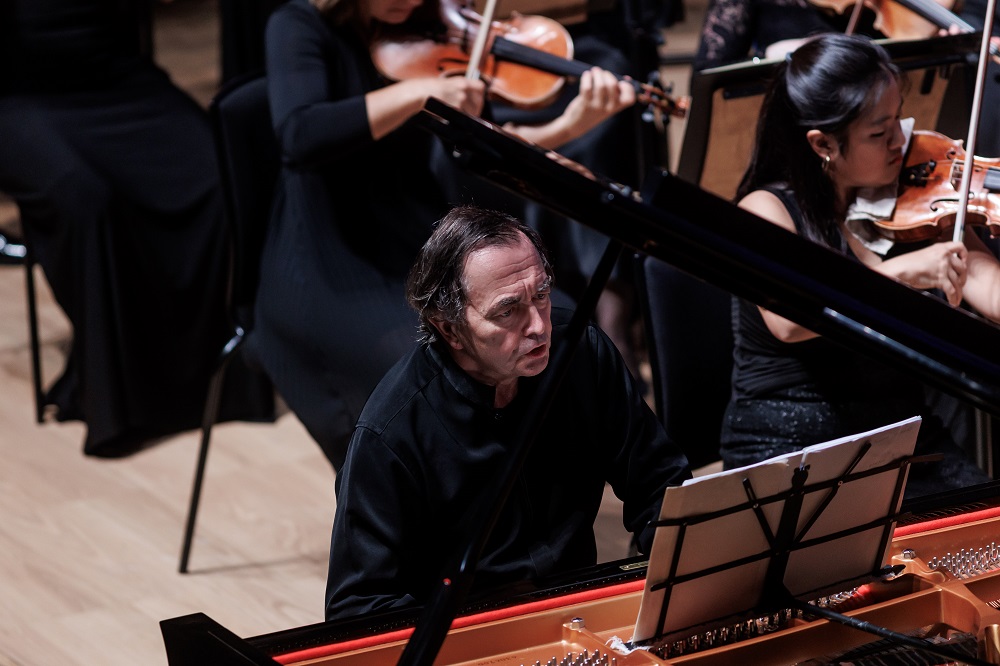The Zurich International series at Cadogan Hall has turned into a horizon-expanding stage on which to catch those visiting orchestras that don’t always claim top billing in bigger venues. The hall’s welcoming acoustic shows off the sound and style of its guests as the grander barns might never do.
After an acclaimed debut UK tour in 2022, Thursday night saw a return engagement for the Concerto Budapest Symphony Orchestra: not, at present, Hungary’s most fêted ensemble but one that, on this form, more than deserves its loud hosannas. Founded (as the Hungarian Symphony Orchestra) before the First World War, led since 2007 by violinist-turned-conductor András Keller, Concerto Budapest brought idiomatic warmth, pulsating energy and infectious enthusiasm to a programme of two fail-safe favourites divided by the twilight struggle and serenity of Bartók’s Third Piano Concerto, with Pierre-Laurent Aimard as the soloist.
On either side of the Bartók, Mozart’s Symphony No 40 and Beethoven’s Third ("Eroica") Symphony showcased what Keller and his band can do with the music everybody knows. Essentially, they delivered a study in the contrasts to be achieved under the overarching canopy of their bright, buoyant, rhythmically exuberant sound. The Mozart (pushed along by a baton-less Keller) had a chamber-like intimacy and cohesion, the onstage forces classically modest, the tone crisp and the pace brisk.
Here (as later in the Eroica) the joyous propulsiveness of the Budapesters’ style tended to downplay the darker, ominous aspect of the G minor soundscape; for intimations of mortality, better look elsewhere. What we did enjoy was the lilt and grace of well-balanced strings, led here by Zsófia Környei, flavourful oboes in the minuet and some charmingly rustic (not rough) horns. A galloping finale bounced along with a refined merriment that left the shadows of the opening far behind. 
If Bartók’s conclusion issued an invitation to the dance, Keller’s reading of the "Eroica" gave us a head-spinning night at the ballroom. Fans of heroic grandeur and Romantic sublimity might need to call at another address; what we found here was a terrific rhythmic verve and agility, bustling tempos and close-knit exhilaration from first to last. The numbers onstage expanded, and Keller picked up his baton. What he never assumed was a mantle of gloomy gravitas. Drama and momentum pushed the allegro along, properly “con brio”, with the broad spread of the divided strings across the Cadogan stage enhancing the theatrical coups – “wrong” notes and all – that Keller stressed in the score. More airy than earthy, even skittish in his tempos and dynamic contrasts, Keller brought high spirits and a flair for surprise to the musical revolution Beethoven launched. He made the freshness of these shocking innovations shine.
This was hardly a lightweight "Eroica" – helped by the Cadogan acoustic, the ensemble sounded full, bold and rich – but it did feel consistently light-filled. So even the “Marcia funebre” overcame its mourning mood to access an uplifting hope and confidence. From darkly gleaming cellos to full-flavoured horns, the Budapest players took us to ecstatic heights even if, arguably, they never quite plumbed tragic depths. But with strings as polished and lustrous as these, it was hard to feel short-changed.
With some majestic tutti, Keller bounded through the scherzo. Jaunty, rugged horns made for a memorable trio. He sprang straight into the finale, which sped by with a gleeful ferocity that could have had us dancing in the aisles. There were gentler colours in the “poco andante” interlude, from oboe, flute and bassoon, but a whirling presto exultation carried us home. Keller’s Eroica bounded rather than brooded. Its kinetic drive maybe struck the notes of triumph a little too easily – but why resist the contagious joy and warmth of such a performance? And if the encores of Hungarian Dances edged into kitsch, with hyperactive Keller doing a kind of cartoon-conductor act – well, he and and his band had more than earned their fun.














Add comment